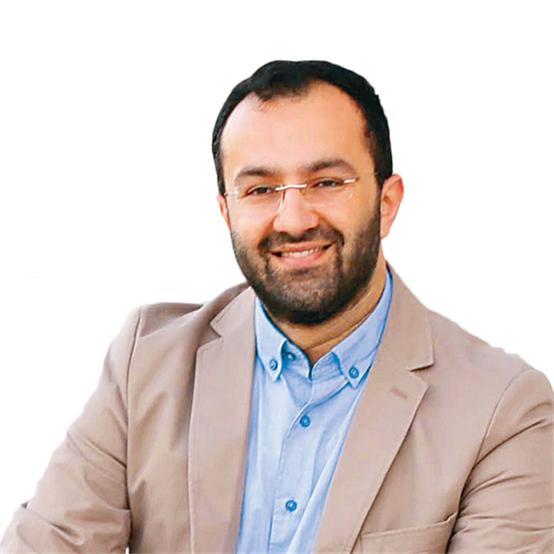Israeli President Reuven Rivlin hosted on Tuesday evening, May 4, 2021, a traditional iftar (fast-breaking dinner) program at his residence in Jerusalem for some Palestinian Muslim Arab leaders and the diplomatic representatives of Islamic countries. While participation in the iftar organization held outdoors in the residence’s garden was relatively low compared to previous years, it was enough for the photos that would be given to Israeli and world press.
President Rivlin joined the iftar, which was adorned with dishes representing Arab cuisine, a couple of minutes before the evening call to prayer, which marks the end of a fasting day. Association of Imams President Shaykh Nadir Haib, Islamic Courts President Dr. Iyad Zahalka, Arab Local Administrations Committee Chair Mudeyr Younes, Egypt’s Ambassador to Israel Khaled Mahmoud Azmi, Jordan’s Ambassador Ghassan Majali, United Arab Emirates’ (UAE) Ambassador Mohammed al-Haja, and Morocco’s official representative in Israel, Abdurrahim Bayyoud were among the Muslim guests who joined the iftar. (Of course, there is no need to mention that the titles of the Palestinian Arab participants were invented and encouraged by Israel, and that they have no binding effect or respectability in the eyes of the Muslim community. It is nothing other than self-service.)
As guests opened their fast with the dates in the tiny plates placed in front of them – and most likely grown on occupied Arab land – Arab-Jewish hymns emphasizing “co-existence in Jerusalem” were playing in the background. When the hunger was slightly appeased, Israeli President Rivlin took the microphone and made a salutation speech. Rivlin’s speech was filled with cliché messages such as, “Reducing violence in the Arab community, increasing the level of education, and things that need to be done to normalize relations between Israeli and Arab nations.” What was interesting – or not – was that the Arab speakers, who took the microphone, repeated the same messages in their own words. Dr. Iyad Zahalka, who made reference to the death of 45 people in a stampede at a Jewish rabbi’s grave in northern Israel last week, underscored that as the Arabs and Druze in the area, they offered all the help and support possible after the incident. Mudeyr Younes, who described Rivlin as “a person who always listens to Arabs,” said, “Peace is not possible without Palestinians. Israeli Arabs will serve as a bridge for peace.”
As these “emotional” scenes were taking place at the presidential residence situated in Talbiya neighborhood, set on one of Jerusalem’s slopes looking onto the historic walls, other emotional incidents were happening in another neighborhood just minutes away. However, this time the emotions and tears were real.
Tensions were intensified again when a group of Zionist occupiers tried to seize Palestinian families’ homes in Sheikh Jarrah neighborhood, located north of ancient Jerusalem. (I say “again,” because the Sheikh Jarrah issue has a long and painful history. See my June 27, 2020 article titled “Ortak Payda” (Common Ground) in this column for the consequence of the neighborhood, whose foundations were laid directly by Salahuddin al Ayyoubi, and the history of resistance against the Zionist occupation.) While Rivlin continued to make statements on the subject of “Preventing violence in the Arab community,” Israeli soldiers were dragging Palestinian civilians on the ground.
As Arab leaders were displaying so-called sensitivity with “bridge” analogies, Zionist occupiers were throwing Molotov cocktails inside Arab homes. While participants in the iftar were emphasizing “union-unity,” what Israel understood of “unity” was nothing other than Jewifying Jerusalem and wiping out Muslims.
President Rivlin’s iftar invitation in Talbiya and the tumult in Sheikh Jarrah went in records as one of the clearest pictures of the sharp contradiction between the image Israel wants to draw for the outside world and the true face of the occupation. Even though the aim is to present an entirely different picture themed “Religious tolerance and the beauty of co-existence in Israel” with the images distributed to the Israeli press and news agencies.
One also cannot help but think, “Could the Muslim representatives and diplomats of Islamic countries not boycott this iftar invitation?” Of course they could have. If they had done this, they would have given an extremely meaningful reaction to the Israeli administration. Perhaps the outcome would not have changed, but the reaction would have echoed in world media. However, very much like the many things we wonder about thinking, “how can this be/why is this not possible?” the above wish that went through our minds did not – or rather could not – happen. Yet, small and simple things can turn into something great and acheive the impossible through unity.




















